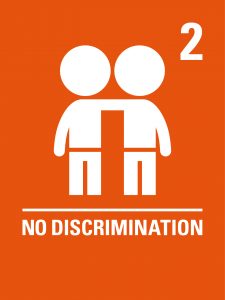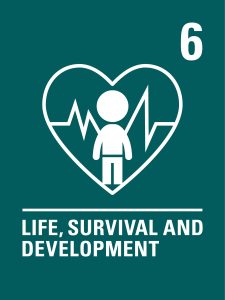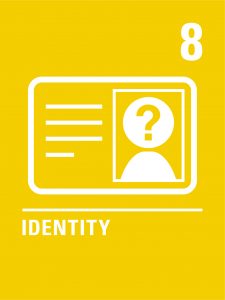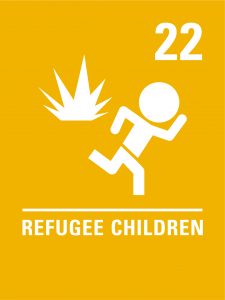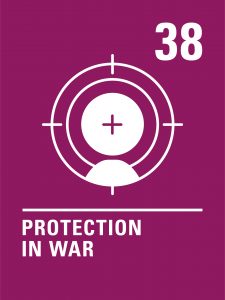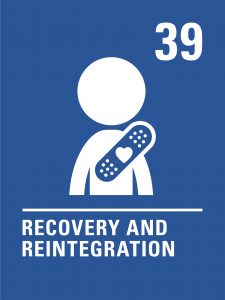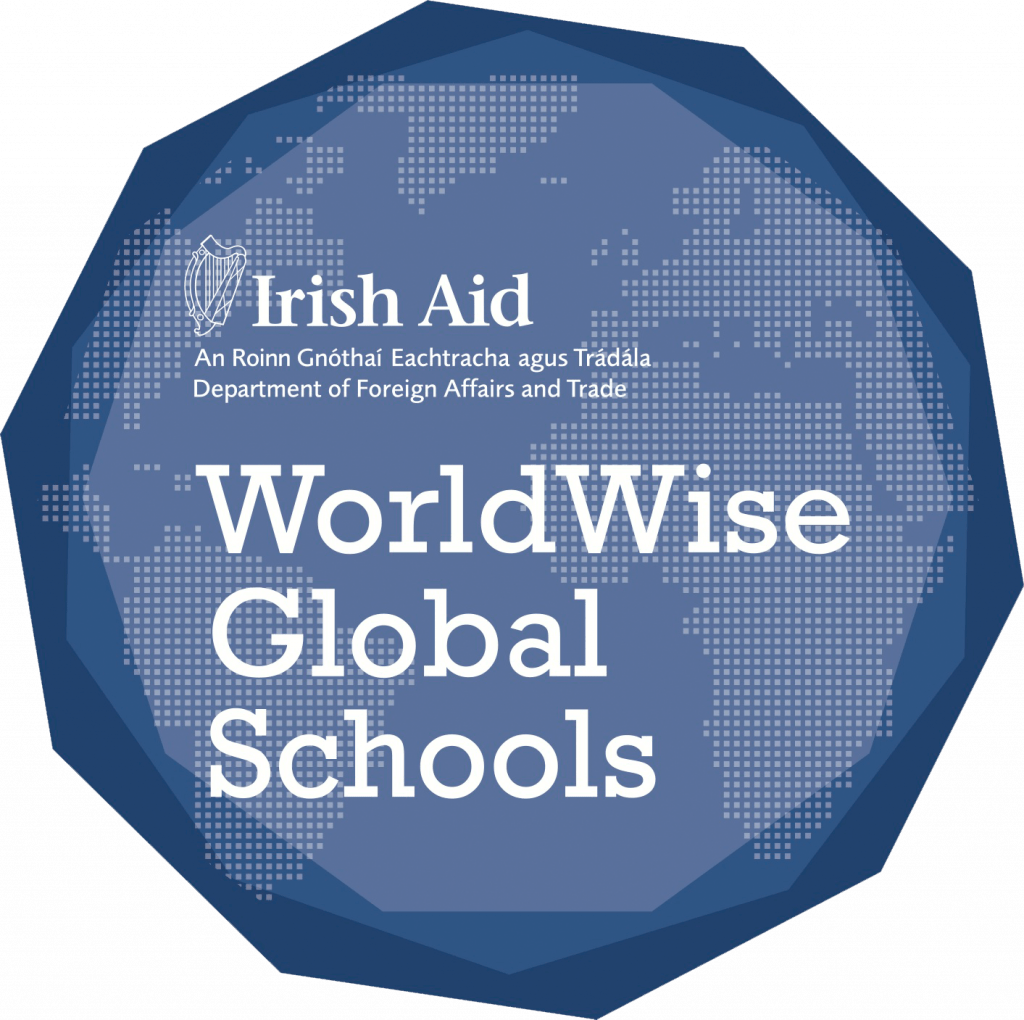All children have a right to safety
CHILDREN UPROOTED Nearly 95 million children are on the move. Some are driven from their homes by conflict, poverty, or disaster; others are migrating hoping to find a better, safer life. Far too many encounter danger, detention, deprivation and discrimination on their journeys. Migrant, refugee and displaced children are children first. Children should feel safe from violence and exploitation. They should be able to stay with their families. They shouldn’t have to miss school or not be able to go to the doctor. They shouldn’t fear xenophobia or discrimination. They should be able to feel at home – wherever home is. Learn about some of the experiences and challenges faced by children who have come to Ireland.
Workshop Activities
| Activity 1 | Leaving Home | 30 Mins |
| Activity 2 | The Journey | 30 Mins |
| Activity 3 | Arrival | 40 mins |
| Activity 4 | Breaking Down Barriers | 40 Mins |
Learning Objectives
- Define the impact displacement has on children’s rights.
- Identify the root cause of displacement and migration.
- Relate the personal loss experienced by children and young people forced to flee their homes.
- Describe the relationship between individual and group identities.
- .Identify their own cultural lens and how it impacts relating to others.
- Increase their confidence to take action in support of refugee and migrant children.
Curriculum Connections
Here is how this resource connects to the Irish curriculum
JUNIOR CYCLE
Statements of Learning (SOL)
SOL 6: The student has an awareness of personal values and an understanding of the process of moral decision-making.
SOL 7: The student values what it means to be an active citizen, with rights and responsibilities in local and wider contexts.
SOL 9: The student understands the origin and impacts of social, economic, and environmental aspects of the world around her/him.
SOL 10: The student has the awareness, knowledge, skills, values and motivation to live sustainably.
SOL 11: The student takes action to safeguard and promote her/his wellbeing and that of others
SOL 23: Brings an idea from conception to realisation
JC WELLBEING – This programme works on achieving the following Well-being indicators.
- Responsible – I take action to protect and promote my wellbeing and that of others.
- Connected – I feel connected to my school, my friends, my community and the wider world. I appreciate that my actions and interactions impact on my own wellbeing and that of others, in local and global contexts.
- Respected – I feel that I am listened to and valued. I have positive relationships with my friends, my peers and my teachers. I show care and respect for others.
CSPE Strand 1- 1.1, 1.3, 1.5, 1.8, 1.9, 1.10, 1.11; Strand 2- 2.1, 2.5, 2.9, 2.10.
English Strand 1, 1.1, 1.2, 1.4, 1.5.
Geography Strand 3- 3.2.
RE Strand 3 – 3.1, 3.2, 3.5.
SPHE Strand 1 – 1.2, 1.8, 1.9; Strand 2 – 2.3; Strand 3- 3.3.
TRANSITION YEAR
SENIOR CYCLE
POLITICS & SOCIETY , Strand 2- Topic 3- 3.2, 3.3, 3.4; Topic 4.1, 4.2, 4.3, 4.4.
Strand 3- Topic 5.1, 5.2, 5.3, 5.4; Topic 6- 6.1, 6.2, 6.3.
Strand 4 – Topic 7.4.
Resources
Vocabulary
Asylum – The protection granted by a country to someone who has left their home country as a political refugee.
Asylum seeker– A person who has left their home country as a political refugee and is seeking asylum in another
Refugee– A person who has been forced to leave their country in order to escape war, persecution, or natural disaster.
Migrant– A person who migrates to another region or country, usually for permanent residence.
Migration – The moving from one region to another. This movement can be within a country or outside of the national borders. Often migration connotes large numbers of people on the move.
Immigrant – A person who comes to live permanently in a foreign country.
Refugee Children Carry Memories of Home
37 Million Children are Displaced Worldwide
Teaching Notes
This topic aims to help children understand the reasons for migration and the effects migration has on children and young people. Through engaging with a variety of workshop activities, children will ‘walk in someone else’s shoes and begin to understand the choices and consequences involved in migration. They should distinguish between the terms ‘refugee’ and ‘migrant’, and be aware of the current global migrant crisis. On a national level, children can be encouraged to discover information about Irish organisations which assist refugees globally and within their local communities. During all activities, a personal reflection is to be encouraged with the use of a Learner Journal. Cross-curricular links can be made to Geography, History, Drama and English as well as SHPE or CSPE. Many suggested workshop activities can be easily adapted for either Primary or Secondary. However, audio-visual resources should be checked carefully for suitability depending on the maturity and ability-range of class members.
This is a sensitive topic, especially for those who have direct experience with migration. Here is a helpful guide to follow on how to handle sensitive topics. If you are a young person leading these activities, please do so with the support of an adult or teacher.
We are now witnessing the highest levels of displacement on record.
people have been forced to flee their home. Among them are nearly 36.5 million are children.
Activity 1 – Leaving Home
Duration: 30 Mins
The aim of this activity is to understand the scale and the impact of displacement and migration.
Discussion: UNICEF’s latest report Uncertain Pathways, shows, that more girls and boys than ever are on the move, with 35.5 million having lived outside their country of birth in 2020 and an additional 23.3 million displaced internally. Crises like the war in Ukraine – which has caused more than 2 million children to flee the country and displaced 3 million internally since February – come on top of this record high. Additionally, children and families are also being driven from their homes by extreme weather events, such as drought in the Horn of Africa and the Sahel, and severe flooding in Bangladesh, India and South Africa. There were 7.3 million new displacements of children as a consequence of natural disasters in 2021. Children do not bear any responsibility for the bombs and bullets, the gang violence, persecution, the shrivelled crops and low family wages driving them from their homes. They are, however, always the first to be affected by war, conflict, climate change and poverty.
- Today, close to 60 million girls and boys have migrated across borders or been forcibly displaced within their own countries. 1.5 million children were born as refugees.
- Today, nearly 1 in every 200 children in the world is a child refugee. Between 2005 and 2015, the number of child refugees under the UNHCR’s mandate more than doubled.
- The report, Uncertain Pathways, found that over the course of the year, there were almost 15 million new displacements or 41,000 each day and that boys outnumber girls.
- Children are dramatically over-represented among the world’s refugees. Children make up less than one-third of the global population, but more than 40 per cent of the world’s refugees in 2021. In 2020, nearly 1 in 3 children living outside their countries of birth are child refugees; for adults, the proportion is less than 1 in 20.
Watch one of the two videos to introduce the class to some of the reasons why children are uprooted and forced to leave home.
- What would cause you to leave Ireland, knowing you might not ever return? War, conflict, oppression, persecution because of ethnicity, sexuality, gender, poverty, climate change / natural disasters, a better quality of life, famine, crop failure, high crime
- What emotions or impact would you be feeling when making this decision? Fear, hunger, desperation, sadness, hope, loss, dread, apprehension, shame, determination, anxiety.
- What forced Irish people to migrate? Famine (the late 1840s) Poverty (1900s) Employment (2000s)
- What would you be seeking? Safety, peace, security, job, employment, education, opportunity.
- Which of these is a human or child right? Refer to the Convention on the Rights of the Child Poster.
Activity: Watch one of the videos below. Based on the video, ask the participants to make up a scenario of a young refugee or migrant on the move. The description should include:
- What country do they live in?
- What is the situation like in that country and why are they leaving?
- What are their living conditions like?
- What incident happened that led them to make their decision?
- Where they are trying to go to?
ECONOMIC
CONFLICT
CLIMATE/DISASTERS
Activity 2 – The Journey
Duration: 30 Mins
The aim of this activity is to encourage participants to reflect on what home means to them and what people leave behind when fleeing.
Discussion: What is lost when you decide to leave your home? Ask participants to think about their home here in Ireland. What would they be leaving behind and what would they miss most if they were forced to leave. Suggestions, culture, language, family, friends, neighbours, security, feeling they belong to a place, food, smells, landscape, weather, control of your life or your future.
Activity: Pack Your Bags – Divide the class into family groups. Tell groups they will be deciding what they would pack for their journey.
-
Hand out 5 index cards per person, and ask students to write one item on each card based on what that person in the family wants to bring on the journey. They can discuss as a group, to not duplicate items.
Items to think of include:
- What will you bring from home that is important to you? – People, pets, toys, food, photos, jewellery.
- What items will you need to bring on your journey? – Clothes, hygiene, medicine, survival equipment, phone, charger, coats, blankets, food, money, passport, water, documents, knife, matches, hat, nappies, medicines, sanitary items, soap, toothpaste, toys, cooking equipment, lighter, flashlight, etc?
- Think again of anything cultural or age-specific – Koran, prayer mat, bible, cross, menorah, etc.?
-
Ask groups to collect all the items together and to think about the journey. How long will it take? Ask them to remove anything they couldn’t carry on their back for long distances from their stack of cards. Ask students to remove two items that might be stolen or lost along the way from their pack. Ask students to remove 3 items they think they will run out of on the long journey. Ask students in the group to place the cards in order of importance to the group and discard the bottom three items.
Video: “Escape from Syria: Rania’s odyssey”
Discussion: What did Rania bring with her on the journey? Two pairs of pants, a towel, a book, a video, a phone, 2 jumpers, jackets, Game of Thrones DVDs, nail clippers, notebooks, pens, coffee cup, toothbrush and toothpaste, pain killers, photographs of her family, her high school qualification, passport and a backpack. How different is it from what you packed? Why were the DVDs important to Rania?
Activity 3 – Arrival
Duration: 40 mins
Video: Watch the video – 80 years apart, these two refugees have more in common than you’d think
Discussion: Globally, more than 100 million people are forcibly displaced. This means 1 in every 78 people on earth has been forced to flee and is a refugee, internally displaced or seeking asylum. If this were the population of a country, it would be the world’s 15th largest country based on population. Aid agencies are running out of money to support the growing numbers. Usually, more than half of any refugee population are children. Refugee children are first and foremost children, and as children, they need to have their rights respected. As refugees, they are, particularly at risk. They are more susceptible to disease, malnutrition, and physical injury. Children are also missing out on childhood, if they miss key stages of development, it can forever damage their physical and mental well-being. Is the world doing enough, is Ireland doing enough? Should refugees rely on luck and charity or should governments ensure their rights are respected?
Walking Debate: Should Ireland take in more refugees, given that we have so many problems, like our housing and healthcare crises? Ask participants to choose sides and debate the question.
Possible arguments:
We can’t afford to?- Ireland is one of the wealthiest nations in the world. In 2019, Ireland ranks 6th wealthiest among all nations on the global ranking scale: Human Development Index (HDI) Ireland ranks 2nd out of 189 countries. If Ireland can’t afford to, how come other countries can? Turkey hosted almost 3 million refugees in 2016, the largest population of any country. Refugee numbers climbed by nearly half a million – from 2.5 million to 2.9 million – in the space of a year. (UNHCR) In terms of the percentage of their population, that would be the equivalent of Ireland receiving 250,000.
We are taking our fair share- The Government has failed to meet its original pledge of bringing 4,000 asylum seekers into the country by the end of 2017, through EU resettlement and relocation programmes, prioritising families, children and unaccompanied minors.By June of 2019, 2,519 people had been relocated or resettled. Almost half of the refugees admitted were under 18 on arrival, and the majority of these – 85% – were under 12. As a percentage of our population, Ireland ranks 29th out of 45 European countries in receiving asylum seekers and refugees. Asylum seekers comprise 0.01% of the Irish population (that is 1 out of every 10,000 people is an asylum seeker). In Lebanon, one in six people was a refugee in 2016 meaning that the country had the largest number of displaced people relative to its own population.
Ireland is too small of a country to take in more refugees Ireland used to have a population of over 8 million, Current population of the Republic is 4.5 million. Ireland has a population density of 65 people per square km (compared to the UK’s population density of 260 people per square km).
Ireland’s economy will be hurt by taking in more refugees The OECD, a club of mostly rich countries, assessed the effect of immigrants on its members’ finances in 2007-09. It found they made a net fiscal contribution of around 0.35% of GDP on average, with relatively little variation from country to country. (The Economist)
We should solve our own problems first Every country has problems with, health, housing and social services. No country has a perfect record and yet all countries have agreed in desperate times for desperate reasons people should be allowed to flee their homes and seek sanctuary.
Video: #AChildisaChild to close the activity.
Activity 4 – Breaking Down Barriers
Duration: 40 Mins
Discussion: Refugees and Asylum-seekers in Ireland often face prejudice, xenophobia and discrimination. What are the barriers they face to being Irish and feeling like they belong? Introduce the activity by showing participants one or two of the introductory videos above. This activity will explore the concept of identity. This is an important component of the learning for establishing a sense of understanding of the assumptions, stereotyping and “othering” that goes on when talking about refugees and migrants.
Activity: ‘Circles of Me’ The following activity provides students with an opportunity to define their own identity. In so doing they will determine what components of that identity are given vs. chosen and what commonalities they share or don’t share with others in the group. What assumptions or stereotypes are made about them based on labels that are given to them.
Step 1: Ask to draw three large circles (one inside the other) and fill them in as follows:
- Inner circle: Record three adjectives that describe themselves. This is our core identity.
- Middle circle: Record things about themselves that they have chosen, e.g. friends, hobbies, interests. This is the part of our identity that we choose for ourselves.
- Outer circle: Record external characteristics e.g. their hair colour, eye colour, birthplace, nationality, culture, religion and race. This is the part of our identity that is given to us – we do not choose these traits.
Feedback: Ask participants to share some of the traits that have been given to them and chosen by them. Discuss the commonalities and differences that have arisen in the classroom. Ask them to share what it feels like when they are part of a large group, versus when they are part of a small group. Ask for adjectives that describe a larger group versus adjectives that describe a smaller group.
-
powerful (large group) or powerless (small group)
-
safe (large group) vulnerable (small group)
-
insider (large group) outsider (small group)
-
majority (large group) minority (small group)
Ask participants to think about the size of the group they find themselves in mostly and how does this affect them.
Ask them to reflect on their identity and to identify any labels, assumptions or stereotypes that are made about them based on their identity. Ask students to think about what it means to “be Irish”.
Video: Individual World Poetry Slam Finals 2015 – Emi Mahmoud Final Roun
Take Action
We all have responsibility for achieving the Sustainable Development Goals by 2030. Below are the goals and their targets that support children uprooted. Use them, along with the Convention on the Rights of the Child to support your call to take action and address these issues. Below are just a few suggestions of actions you can take.
TOOLS
EXPLORE
This activity can help your school achieve a Global Passport Award. Learn more or apply at WWGS’s Global Passport Award.
Funded by Irish Aid’s WorldWise Global Schools – contents are the responsibility of its author and do not necessarily represent or reflect WWGS and or Irish Aid policy.
